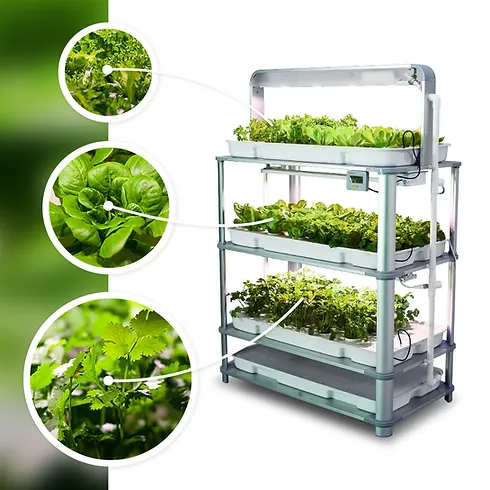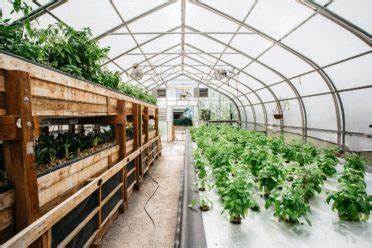
Vertical Farming: A Sustainable Solution for Urban Food Deserts
Introduction
In today’s rapidly urbanizing world, access to fresh and nutritious food has become a pressing concern, particularly in densely populated cities. This article aims to explore the concept of vertical farming and its relevance in addressing urban food deserts. By finding innovative solutions to cultivate food in limited spaces, vertical farming has the potential to revolutionize urban agriculture and ensure food security for all.
Historical Background
Vertical farming has a rich history, with key milestones and developments shaping its evolution. The concept can be traced back to the Hanging Gardens of Babylon and has continuously evolved to meet the growing demands of urban populations. However, the emergence of urban food deserts, areas with limited access to affordable and nutritious food, has created an urgent need for alternative farming methods.
Key Concepts and Definitions
Vertical farming is a system of cultivation that utilizes vertically stacked layers to grow crops, often in controlled environments. It differs from traditional agriculture methods by maximizing space utilization through the use of hydroponics, aquaponics, and aeroponics. Urban food deserts, on the other hand, refer to areas where fresh and healthy food is scarce, often due to socioeconomic factors and limited access to grocery stores.

Main Discussion Points
Benefits of Vertical Farming in Urban Food Deserts
Increased food production in limited space: Vertical farming allows for the cultivation of crops in vertical layers, maximizing land utilization and increasing food production per square foot.
Reduced transportation costs and carbon emissions: By growing food directly in urban areas, vertical farming minimizes the need for long-distance transportation, reducing carbon emissions associated with food miles.
Year-round cultivation and climate control: Vertical farms can provide a consistent supply of fresh produce regardless of seasonal changes, ensuring a reliable food source for urban communities.
Social and Economic Impacts of Vertical Farming in Urban Food Deserts
Improved access to fresh and healthy food: Vertical farming brings nutritious food closer to underserved communities, addressing the issue of food deserts and promoting better health outcomes.
Job creation and economic stimulation: The establishment of vertical farms creates employment opportunities, stimulating economic growth in urban areas while fostering community development.
Community empowerment and self-sufficiency: Vertical farming can empower communities to take control of their food production, reducing reliance on external food sources and promoting self-sufficiency.
Environmental Sustainability of Vertical Farming in Urban Food Deserts
Efficient use of water and energy: Vertical farms employ advanced irrigation systems and LED lighting, minimizing water usage and energy consumption compared to traditional agriculture.

Reduction of chemical inputs and waste: With precise nutrient delivery and pest control, vertical farming significantly reduces the need for pesticides and herbicides, resulting in reduced chemical pollution and waste.
Preservation of agricultural land and biodiversity: By utilizing vertical space within urban areas, vertical farming helps preserve valuable agricultural land outside cities, promoting biodiversity conservation.
Case Studies or Examples
Several successful vertical farming projects have emerged in urban food desert areas, demonstrating the potential of this innovative approach. For instance, Gotham Greens, a leading urban agricultural company, operates commercial-scale vertical farms across several cities, providing fresh produce to local communities. These case studies highlight the challenges faced, such as initial investment costs and technological complexities, but also showcase the benefits achieved.
Current Trends or Developments
Advancements in vertical farming technologies and techniques continue to shape the future of this industry. Innovations such as vertical aeroponics and modular farming systems have increased efficiency and scalability. Furthermore, the integration of vertical farming with renewable energy sources like solar power presents opportunities for sustainable and self-sufficient urban food production. Ongoing research also explores the nutritional quality and safety of vertical farm produce, ensuring its suitability for human consumption.
Challenges or Controversies
While vertical farming holds great promise, it is not without challenges and controversies. Concerns have been raised regarding the high initial costs and energy requirements of vertical farming systems. Additionally, scalability remains a potential limitation, as implementing large-scale vertical farms may pose logistical and economic challenges. Differing viewpoints exist regarding the effectiveness and feasibility of vertical farming as a comprehensive solution for addressing urban food deserts.

Future Outlook
Looking ahead, vertical farming is poised to play an increasingly significant role in addressing urban food deserts. Continued advancements and innovations are expected to enhance the sustainability and efficiency of vertical farming systems. As technology improves and costs decrease, vertical farming has the potential to become a mainstream method of food production, contributing to improved food security, public health, and environmental sustainability.
Conclusion
Vertical farming offers a sustainable and practical solution to combat urban food deserts. By increasing food production in limited spaces, improving access to fresh and healthy food, and reducing environmental impacts, vertical farming holds immense potential. As we move towards a more urbanized future, it is crucial to embrace innovative solutions like vertical farming to ensure food security for all and create healthier, more resilient communities.
References
For further reading or research on vertical farming and urban food deserts, the following sources are recommended:
Despommier, D. (2010). The vertical farm: Feeding the world in the 21st century. Macmillan.
Food and Agriculture Organization of the United Nations. (2015). Urban and peri-urban agriculture. Retrieved from http://www.fao.org/urban-agriculture/en/
Smit, J., Nasr, J., & Ratta, A. (1996). Urban agriculture: Food, jobs, and sustainable cities. United Nations Development Programme.
Specht, K., Siebert, R., Hartmann, I., Freisinger, U. B., Sawicka, M., Werner, A., & Thomaier, S. (2014). Urban agriculture of the future: An overview of sustainability aspects of food production in and on buildings. Agriculture and Human Values, 31(1), 33-51.




